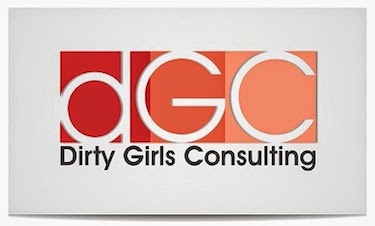Day Two: The Truth is Out There
Like Mulder, we want to believe. Like Scully, we can't quite get there.
We rolled into Roswell, New Mexico, ready to try, though. Roswell is not on the direct route between Phoenix and Naples, but we took the detour to seek the truth. We are a family of sci-fi geeks. That truth is already out there.
So early morning on Day Two took us to Martin's Country Cafe. It was loud with chatter and the waitress was friendly, however, it took over ten minutes to get a cup of coffee and another ten to place our order. This was not setting up a great expectation for breakfast, as we were four hungry, grumpy tourists amid a cast of cowboys and rough hewn senior citizens. No, really. Real cowboys. And real seniors.
Lesson Two: Managing Expectations Requires Flexibility
When breakfast arrived, all prior concerns dissipated. My eggs were over-easy just right (not too hard!) and the carne asada was spicy and simmering. Silence hovered over the table we immersed ourselves into hot platters of pancakes, chorizo, tortillas, hash browns and more. The cowboy/owner - Martin? - replete with giant belt buckle and broad brimmed hat, kept my coffee topped off and brought extra cream and napkins.
We were now ready to find the truth.
 I had planned a full morning of alien hunting and research. After all, the crash of 1947 started a frenzy of newspaper articles and speculation about life beyond earth and government cover ups. But we wanted to get into the details, see the evidence that has so many believers staring into the starry night skies. We wanted to see what the residents of Roswell claimed to see 65 years ago. So we were heading to every place in town that advertised a little more information about the truth being out there.
I had planned a full morning of alien hunting and research. After all, the crash of 1947 started a frenzy of newspaper articles and speculation about life beyond earth and government cover ups. But we wanted to get into the details, see the evidence that has so many believers staring into the starry night skies. We wanted to see what the residents of Roswell claimed to see 65 years ago. So we were heading to every place in town that advertised a little more information about the truth being out there.
First stop: The UFO Museum and Research Center sits on Main Street like an old style cinema. Blazing lights on the marquee. A few of the neighboring downtown storefronts have little green men painted on the windows and proclaim, "Aliens welcome here!"
We expected kitsch. Really, we did. But we also thought we would find that something more… You know what it's like when you meet the ultimate coworker - smart, funny, great background - and then you're two days into a four day business trip and you learn he can't meet a deadline and has a Turrets-like affect whenever the client leaves the room? This was the UFO Museum and Research center. Only it took just fifteen minutes to fulfill our disillusionment. We went in - healthy disbelievers but hopeful for that nugget, that little extra something that made it plausible, to so many people, that alien life was not only 'out there', but 'down here' as well.
We didn't find it. There was no more evidence, no more research than you could find through a Google search and marathoning the X-Files. It was a tangible let-down and left us staring at an agenda of alien-friendly destinations that no longer held any appeal. Kitsch is fun for a few laughs, but how many photos of latex aliens does one really need? In the case of that coworker, the jokes may be funny but you're still left doing double the work to meet client deadlines.
So we reset. For future projects, you finagle a role for your coworker that doesn't impact your work load or better yet, keep him off your projects altogether. In the case of alien hunting, we went to Starbucks. Having refueled on our expected caffeine-laden favorites, we changed our game plan and then made our way through three hours of Texas oil fields to face our next adventure.
We expected kitsch. Really, we did. But we also thought we would find that something more… You know what it's like when you meet the ultimate coworker - smart, funny, great background - and then you're two days into a four day business trip and you learn he can't meet a deadline and has a Turrets-like affect whenever the client leaves the room? This was the UFO Museum and Research center. Only it took just fifteen minutes to fulfill our disillusionment. We went in - healthy disbelievers but hopeful for that nugget, that little extra something that made it plausible, to so many people, that alien life was not only 'out there', but 'down here' as well.
We didn't find it. There was no more evidence, no more research than you could find through a Google search and marathoning the X-Files. It was a tangible let-down and left us staring at an agenda of alien-friendly destinations that no longer held any appeal. Kitsch is fun for a few laughs, but how many photos of latex aliens does one really need? In the case of that coworker, the jokes may be funny but you're still left doing double the work to meet client deadlines.
So we reset. For future projects, you finagle a role for your coworker that doesn't impact your work load or better yet, keep him off your projects altogether. In the case of alien hunting, we went to Starbucks. Having refueled on our expected caffeine-laden favorites, we changed our game plan and then made our way through three hours of Texas oil fields to face our next adventure.


